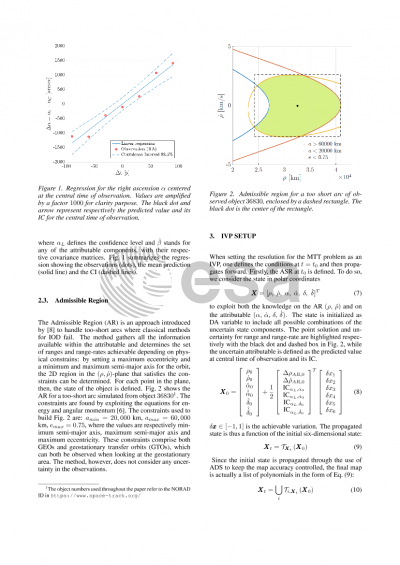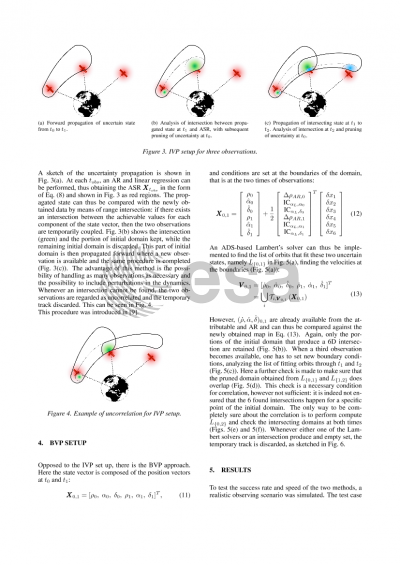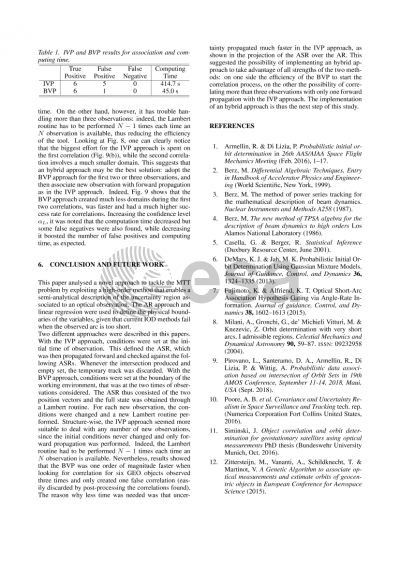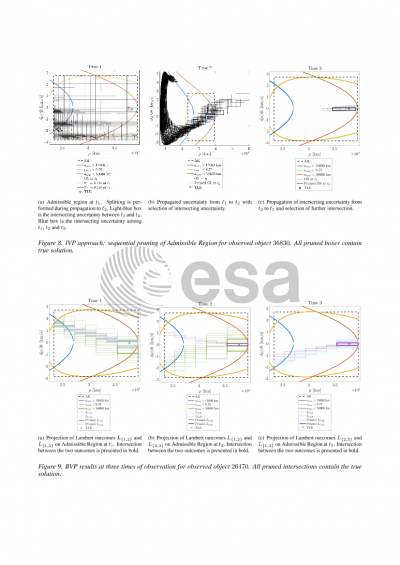Document details

Abstract
The problem of determining the state of resident space objects (RSOs) is fundamental to maintain a collision-free environment in space, predict space events and perform activities. Due to the development of new observation technologies and the ever-growing number of RSOs, the number of observations available is increasing by the day. This calls for more efficient methods able to deal with the amount of data produced. Furthermore, when surveying the sky, the short-arc nature of the observations does not allow for precise orbit determination during a single passage of the object over an observing station: more short-arcs pertaining to the same object are necessary to determine a track. Determining which short-arcs belong to the same object is called data association.
Within the data association problem, the multi-target tracking (MTT) problem has gained relevance. It refers to the problem of jointly estimating the number of targets and their states from sensor data. We propose a new method that builds on the Admissible Region approach and exploits Differential Algebra (DA) to efficiently estimate uncertainty ranges to discriminate between correlated and uncorrelated observations. The uncertainty is defined in six dimensions thus determining a region of admissible states, called the Orbit Set (OS). This region is subsequently pruned when a new observation is acquired to remove the parts of the OS that do not fit with new observations. Every time a new observation is available, the OSs available are checked two-by-two against the newly created OS. If there exists at least a sub-domain in common to the two OSs, a temporary track is formed, where the OS is the intersection of the two. Whenever none of the states contained in the OS fits with the new observation, the track is discarded. The pruning is enabled by the Automatic Domain Splitting (ADS) tool, which estimates and controls the truncation error of the polynomial expansions in DA: whenever the tolerance set is not respected, the domain over which the expansion is determined is halved and two new expansions are determined. This allows an accurate description of the OSs using Taylor expansions. The ADS tool is exploited in this work during propagation.
The MTT problem is formulated with two different mathematical conditions: as initial value problem (IVP) and as boundary value problem (BVP). The first one allows us to determine the OS as a 6 dimensional region at a single epoch for each observation. Every time a new observation (and thus a new OS) is available, the region is propagated to look for intersections. The second formulation, on the other hand, allows us to consider the two-by-two comparison as a Lambert’s problem thus determining the OS as a composition of position vectors from the two epochs. The intersection of the OS is then found by comparing the projection of velocity vectors determined by the Lambert algorithm on the observation space. The efficiency and success rate of the two formulations is evaluated and compared to results in literature.
Preview








